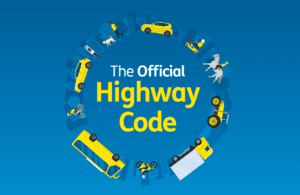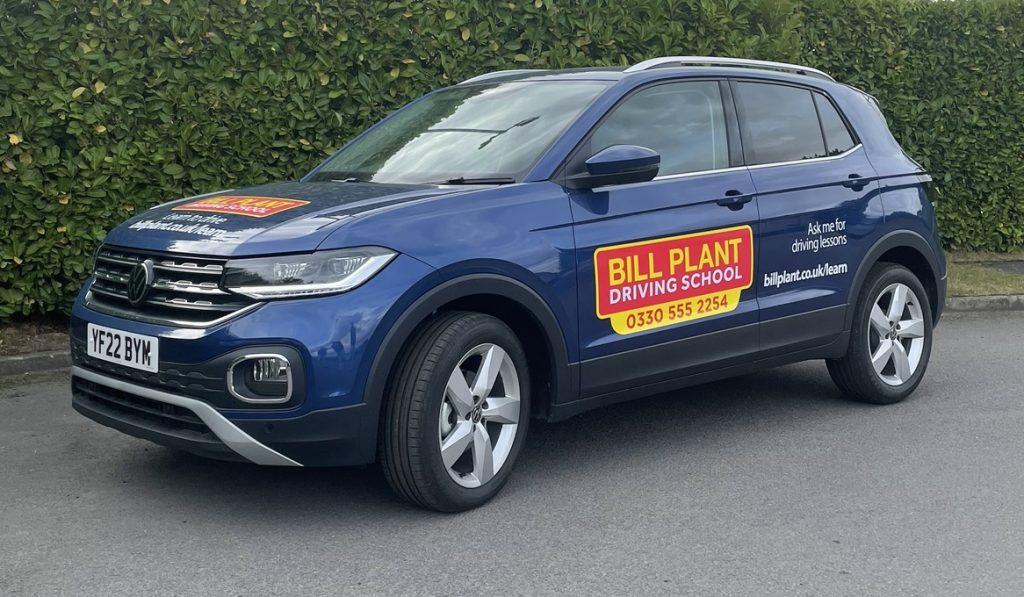
From the 29th of January 2022, the Highway Code will be updated with 8 major changes that all road users need to be aware of to ensure safe driving when out on the road. We’ll talk you through each of the 8 major highway code changes to ensure you understand the new rules, and continue to practice safe and legal driving standards whilst on your driving lessons.
1. Hierarchy of road users
The ‘“Hierarchy of road users” is one of the areas where fundamental changes are taking place. The idea behind the hierarchy is that those road users who can cause the most harm will have the most responsibility – especially at junctions!
For example, a driver will no longer be able to cross the path of cyclists or pedestrians who are waiting to cross at a junction, as they will now have priority.
The new hierarchy will be as follows:
- Pedestrians
- Cyclists
- Horse riders
- Motorcyclists
- Cars
- Vans/Minibuses
- Large passenger vehicles/HGV’s
2. People crossing the road at junctions
The Highway Code has been updated to state that if a pedestrian is waiting to cross a road or is in the middle of crossing the road, all other traffic must give way. Cyclists, drivers and motorcyclists must also give priority to pedestrians waiting at or currently walking across a zebra or parallel crossing.
3. Walking, cycling or riding in shared spaces
The new guidance will cover routes shared by cyclists, horse riders and pedestrians. Those who are either riding a bike or horse should always make sure they are passing pedestrians safely. Furthermore, pedestrians should ensure that they are not causing an obstruction to those riding a horse or bike.
As per the new guidance, cyclists are asked:
- Not to pass others using shared spaces at a high speed
- To slow down and make other road users are aware that they are there (by using their bell for example)
- Not to cycle past horse riders on their left side
4. Positioning in the road when cycling
This update specifically references cyclists and informs them on how they should position themselves when out on the road. These changes include:
- On quiet roads, slow-moving traffic and when approaching a junction or when a road is narrowing, a cyclist should be riding in the centre of their lane
- When on busier roads, a cyclist should be keeping at least 0.5 meters away from the kerb (and further towards the center of their lane when it is safer)
For those cycling in a group they must:
- Be considerate of the needs of others when cycling in groups
- Allow other road users to overtake them (by moving into a single file or stopping for example) when it is safe to do so
Cyclists are able to ride 2 abreast when cycling in large groups or when accompanying a child or a more inexperienced rider.
When cycling past a parked vehicle, cyclists must:
- Leave about a door’s width (1 meter) to avoid being hit if a door is opened
- Be mindful of people walking out from behind parked cars
5. Overtaking when driving or cycling
If necessary (and only if the road is unobstructed), you may cross a double-white line to the other side of the road in order to pass cyclists or horse riders travelling at 10 mph or less (as per Rule 129 of the Highway Code).
When overtaking vulnerable road users, there is new advice on both safe passing distances and speeds for drivers or motorcyclists:
- When overtaking cyclists at speeds of up to 30 mph, you should leave at least 1.5 metres (5 feet) between one another, and give them extra room when overtaking at greater speeds
- When overtaking horse riders or those operating horse-drawn vehicles at speeds under 10 mph, you should give them at least 2 metres (6.5 ft) of clearance
- When overtaking pedestrians in the street (for example, if there is no pavement), you should provide a gap of at least 2 metres (6.5 feet) and drive at a safe speed.
In all instances, you should wait patiently behind these road users and not overtake if it’s unsafe or not possible to meet these distances.
For people cycling past slower-moving or stationary traffic
Previously, cyclists were able to pass slower-moving or stationary vehicles on the left hand side – however this has now been extended to the right hand side too, in accordance with the new guidance. Drivers must ensure that they make every effort to see them, and cyclists should continue with caution. This is especially critical:
- When approaching a junction
- While determining whether to pass lorries or other large vehicles
6. People cycling at junctions
According to the amended regulations, cyclists should now give way to pedestrians who are walking, crossing or waiting to cross a junction, when turning into or out of a side road.
Some junctions now have small cycle traffic lights at eye-level height, allowing cyclists to proceed ahead of regular traffic. Cyclists are encouraged to take advantage of these amenities, which have been developed in order to make their journeys safer and easier.
Updated advice has been produced for cyclists at junctions where there are no separate facilities, in order to ensure that they are as visible as possible and avoid being overtaken in critical situations.
When a cyclist is turning right
Cycling advice is now included in the code for cyclists using junctions where signs and markings instruct them to turn right in two stages. These are as follows:
Stage 1: When the traffic lights turn green, proceed straight ahead to the area marked on the road by a cycle symbol and a turn arrow, then stop and wait.
Stage 2: Finish the motion when the traffic lights on the far side of the junction (now facing the cyclists) turn green
When going straight at junctions, cyclists have priority
The new guidance clarifies that, unless road signs or markings indicate otherwise, cyclists who are travelling straight ahead at junctions have priority over traffic waiting to turn into or out of a side road.
Cyclists are reminded to keep an eye out for drivers who want to turn across their path, as those driving ahead may not be able to see them.
7. People cycling, riding a horse and driving horse-drawn vehicles on roundabouts
The code has been revised to state that individuals driving or riding a motorcycle on roundabouts shall give way to cyclists.
According to the revised guidelines, those who drive or ride a motorcycle should allow cyclists to move across their route as they proceed around the roundabout and not attempt to overtake them if both parties are in the same lane.
People cycling, riding a horse, or driving a horse-drawn vehicle may stay in the left-hand lane of a roundabout if they intend to continue across or around the roundabout.
According to the new guidance, drivers should take additional caution when entering a roundabout to avoid cutting across those cycling, riding a horse, or driving a horse-drawn vehicle, who are continuing around the roundabout in the left-hand lane.
8. Parking, charging and leaving vehicles
When exiting a car, the Highway Code now suggests taking a new approach, often known as “the Dutch Reach.”
When drivers or passengers have the option, they should open car doors with the hand on the opposite side of the door they are opening. For instance, one would open a door on their left side with their right hand.
This has the effect of causing the driver/passenger to look behind them when reaching for the handle, naturally causing them to turn their head, which enables them to clearly see any approaching passer-bys in their blind spots, prior to opening the car doors. As a result, they’re less likely to harm:
- Cyclists and motorcyclists passing on the road
- Pedestrians on the pavement
Using a charging station for electric vehicles
The Highway Code now provides instructions on how to use electric vehicle charging stations for the first time.
Individuals should do the following when using an electric charging station:
- Avoid creating a trip hazard for those walking from trailing cables by parking close to the charge point
- Put up a warning sign, if possible
- Return charging cords and connectors in a neat manner in order to avoid endangering others and causing an obstruction for other road users
Dave Leverton – Driving Instructor at Bill Plant Driving School states:
‘Many of the things that have been updated in the Highway Code, most instructors will have been teaching these methods for a while for example giving cyclists and horses enough space when overtaking.
The main element that will change will be giving way to pedestrians when turning in and out of junctions. This will require the level of anticipation and forward-thinking from students to increase. At the moment students are being taught to look out for hazards ON the road but they will now have to look out for hazards approaching the road as well.
As long as students are being taught correctly and to a high standard the changes to highway code should cause no issues at all’

